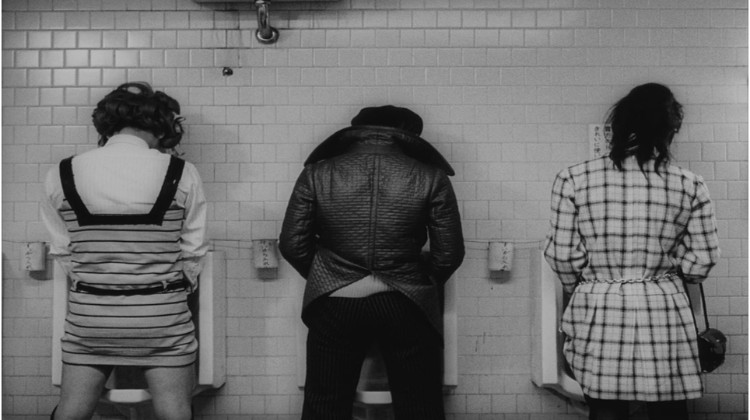The Best Japanese New Wave Movies
“What are the best Japanese New Wave Movies?” We looked at 119 of the top Japanese New Wave films and ranked them so we could answer that very question!
The top 27 films, all appearing on 3 or more “Best Japanese New Wave” movie lists, are ranked below by how many times they appear. The remaining 75+ movies, as well as the sources we used, are in alphabetical order on the bottom of the page.
Happy Scrolling!
Top 27 Best Japanese New Wave Movies Of All-Time
27 .) A Wife Confesses (1961) directed by Yasuzô Masumura
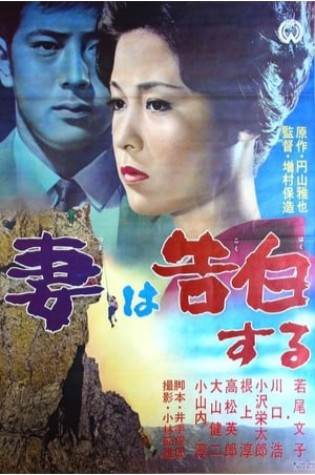
Lists It Appears On:
- IMDB
- Movements In Film
- Taste Of Cinema
Tied to a mountain between her brutalizing spouse and her secret lover, disaster strikes; the authorities accuse her of murder and prompt a confession.
26 .) Bad Boys (1961) directed by Susumu Hani
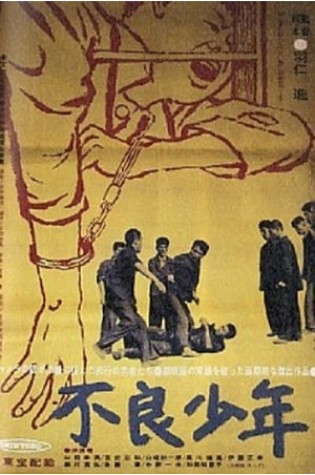
Lists It Appears On:
- Movements In Film
- MUBI
- Taste Of Cinema
A young delinquent takes part in a robbery and is sentenced to a juvenile detention center, where he clashes with other youths and reflects on his life experiences.
25 .) Mandara (1971) directed by Akio Jissôji
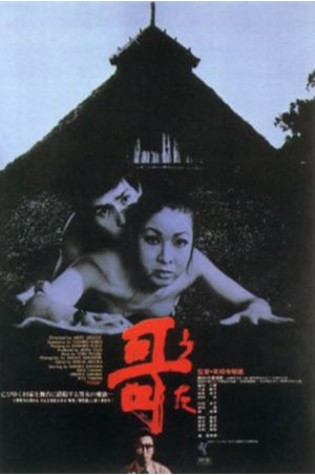
Lists It Appears On:
- IMDB
- Movements In Film
- Taste Of Cinema
The young houseboy in Uta wakes up every night to patrol the house of a teacher with a flashlight. He leads an austere life of meditation and he focuses his devotional attention on writing inscriptions for tombstones.
24 .) Night and Fog in Japan (1960) directed by Nagisa Oshima
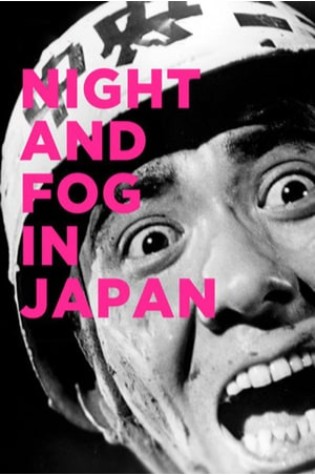
Lists It Appears On:
- BFI
- Movements In Film
- MUBI
Nagisa Oshima’s most personal film is a reflection by the director on his own disillusionment with the revolutionary student movement of the 1950’s and the failure of political radicalism. Taking it’s title (as a reference or homage) from Alain Resnais’ pivotal 1956 documentary Nuit et Brouillard, the film has a group of former student revolutionaries who meet again years later at the wedding of one of their classmates. Old feelings, rivalaries and grudges gradually erupt to the surface as the one-time friends recall the various treacheries by which their cause was defeated. Cutting between times past and the present, and unfolding the action from each of his characters viewpoints, Oshima creates an abstract and yet engrossing study of passions past and principles eroded. —Yume Pictures
23 .) Pigs and Battleships (1961) directed by Shôhei Imamura
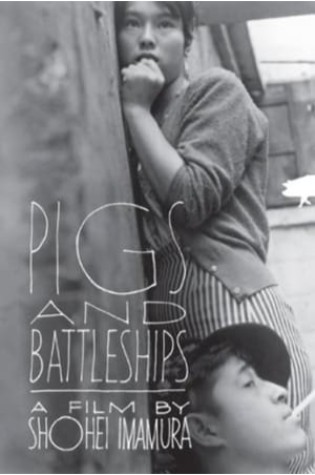
Lists It Appears On:
- IMDB
- Movements In Film
- MUBI
In the city of Yokosuka, Kinta and his lover Haruko, both involved with yakuza, brave the post-occupation period with a goal to be together.
22 .) Profound Desires of the Gods (1968) directed by Shôhei Imamura
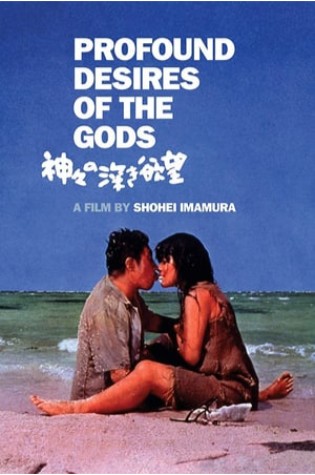
Lists It Appears On:
- Flick Feast
- MUBI
- White City Cinema
Tokyo engineer Kariya arrives on a primitive tropical island, where he interacts with the Futori clan, to drill a well to power a sugar mill.
21 .) She and He (1963) directed by Susumu Hani
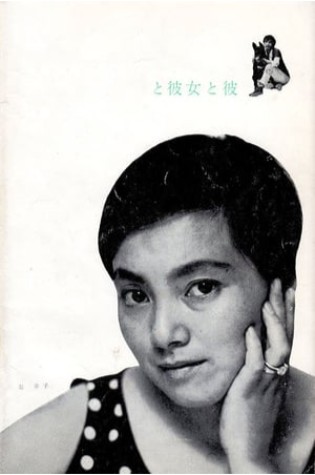
Lists It Appears On:
- IMDB
- Movements In Film
- MUBI
As her husband Eiichi becomes more entangled in his life as businessman, Naoko looks for ways to expand her own life even as her husband’s life shrinks in scope and intimacy. She finds new interests, new love, and a greater sense of her place in the world.
20 .) The Face of Another (1966) directed by Hiroshi Teshigahara
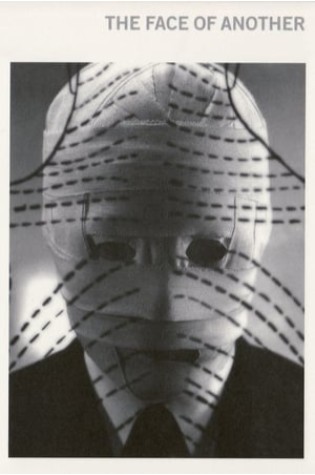
Lists It Appears On:
- BFI
- Movements In Film
- MUBI
A businessman with a disfigured face obtains a lifelike mask from his doctor, but the mask starts altering his personality.
19 .) The Insect Woman (1963) directed by Shôhei Imamura

Lists It Appears On:
- IMDB
- Movements In Film
- MUBI
A woman, Tome, is born to a lower class family in Japan in 1918. The title refers to an insect, repeating its mistakes, as in an infinite circle. Imamura, with this metaphor, introduces the life of Tome, who keeps trying to change her poor life.
18 .) The Man Who Left His Will on Film (1970) directed by Nagisa Oshima
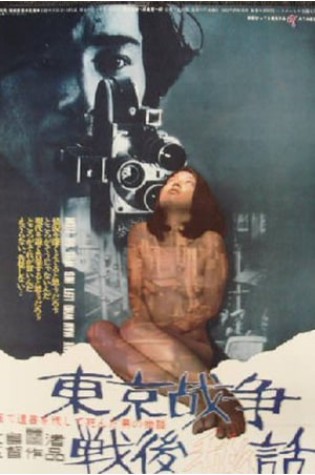
Lists It Appears On:
- Art Publikamag
- Movements In Film
- MUBI
A metaphysical mystery involving a university student’s camera getting stolen, and the thief then committing suicide. Looking back upon the event, the situation comes to be questioned if it happened at all.
17 .) The Pornographers (1966) directed by Shôhei Imamura
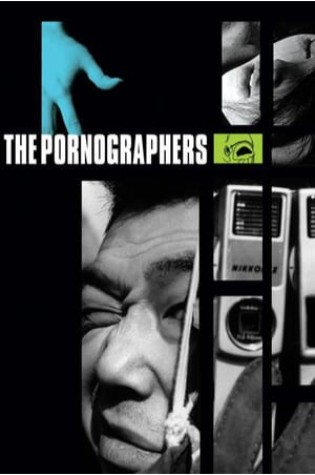
Lists It Appears On:
- IMDB
- Movements In Film
- MUBI
Subu makes pornographic films. He sees nothing wrong with it. They are an aid to a repressed society, and he uses the money to support his landlady, Haru, and her family. From time to time, Haru shares her bed with Subu, though she believes her dead husband, reincarnated as a carp, disapproves. Director Shohei Imamura has always delighted in the kinky exploits of lowlifes, and in this 1966 classic, he finds subversive humor in the bizarre dynamics of Haru, her Oedipal son, and her daughter, the true object of her pornographer-boyfriend’s obsession. Imamura’s comic treatment of such taboos as voyeurism and incest sparked controversy when the film was released, but The Pornographers has outlasted its critics, and now seems frankly ahead of its time.
16 .) Thirst for Love (1966) directed by Koreyoshi Kurahara

Lists It Appears On:
- IMDB
- Movements In Film
- Taste Of Cinema
Koreyoshi Kurahara adapted a novel by Yukio Mishima for Thirst for Love (Ai no kawaki), a tense psychological drama about a young woman who is widowed after marrying into a wealthy family, and becomes sexually involved with her father-in-law, while harboring a destructive obsession with the family gardener. Kurahara’s atmospheric style is a perfect match for Mishima’s brooding sensuality.
15 .) Tokyo Drifter (1966) directed by Seijun Suzuki
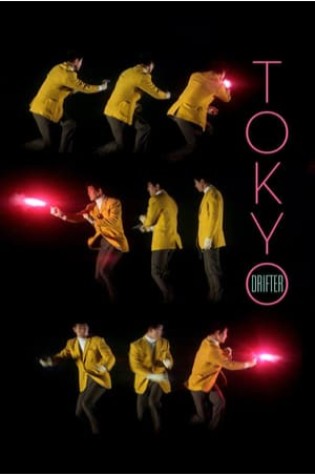
Lists It Appears On:
- IMDB
- Movements In Film
- MUBI
After yakuza boss Kurata dissolves his own criminal empire, a rival kingpin offers a position to Kurata’s top operative, Tetsuya “Phoenix Tetsu” Hondo. When the fiercely loyal Tetsu declines, Otsuka taps unstoppable Tatsuzo the “Viper”, a ruthless gun-for-hire, to assassinate him. As the Viper trails his target through the countryside, the agile Phoenix Tetsu grows concerned that one of his former associates has betrayed him.
14 .) A Fugitive from the Past (1965) directed by Tomu Uchida
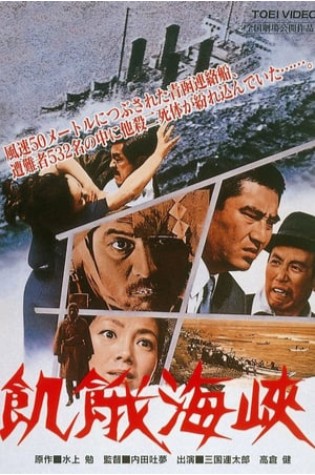
Lists It Appears On:
- IMDB
- Movements In Film
- Taste Of Cinema
- White City Cinema
Three robbers escape with loot from a heist before one of them shoots them; their corpses wash up near the aftermath of a maritime calamity, provoking a policeman’s interest.
13 .) Intentions of Murder (1964) directed by Shôhei Imamura
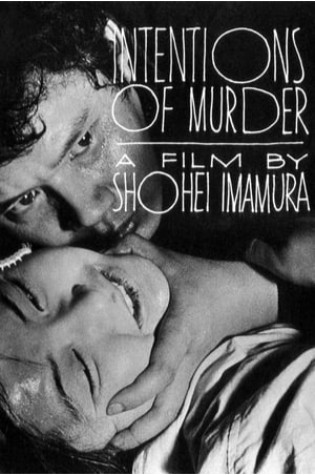
Lists It Appears On:
- IMDB
- Movements In Film
- MUBI
- Taste Of Cinema
Sadako, cursed by generations before her and neglected by her common-law husband, falls prey to a brutal home intruder. But rather than become a victim, she forges a path to her own awakening.
12 .) Pale Flower (1964) directed by Masahiro Shinoda
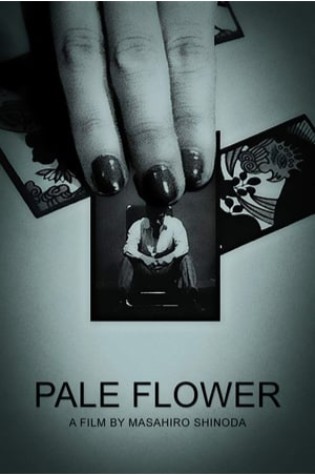
Lists It Appears On:
- IMDB
- Movements In Film
- MUBI
- Taste Of Cinema
Muraki, a hardboiled Yakuza gangster, has just been released from prison after serving a sentence for murder. Revisiting his old gambling haunts, he meets Saeko, a striking young upper-class woman who is out seeking thrills, and whose presence adds spice to the staid masculine underworld rituals. Muraki becomes her mentor while simultaneously coping with the shifts of power that have affected the gangs while he was interred. When he notices a rogue, drug-addicted young punk hanging around the gambling dens, he realizes that Saeko’s insatiable lust for intense pleasures may be leading her to self-destruction.
11 .) Throw Away Your Books, Rally in the Streets (1971) directed by Shûji Terayama
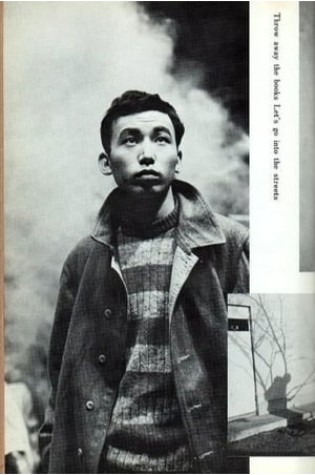
Lists It Appears On:
- IMDB
- Movements In Film
- MUBI
- Taste Of Cinema
Conditions have been better for the nameless protagonist: his grandmother is a shoplifter and his war criminal father and sister have an unhealthy, intimate relationship with the family rabbit.
10 .) Branded to Kill (1967) directed by Seijun Suzuki

Lists It Appears On:
- IMDB
- Movements In Film
- MUBI
- Taste Of Cinema
- White City Cinema
After botching his latest assignment, a third-ranked Japanese hit man becomes the target of another assassin.
9 .) Death by Hanging (1968) directed by Nagisa Ôshima

Lists It Appears On:
- Amino Apps
- IMDB
- Movements In Film
- MUBI
- Taste Of Cinema
A Korean man is sentenced to death in Japan but survives his execution, sending the authorities into a panic about what to do next.
8 .) Double Suicide (1969) directed by Masahiro Shinoda
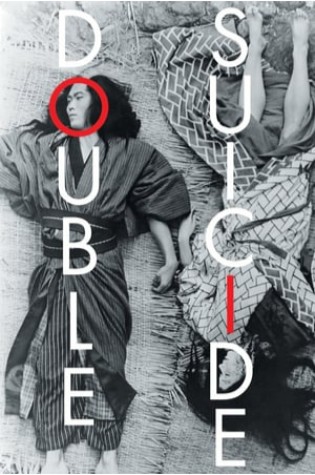
Lists It Appears On:
- Flick Feast
- IMDB
- Movements In Film
- MUBI
- White City Cinema
Successful and married with children, paper-mill owner Jihei knows better than to contradict the strict social and moral codes of 18th-century Japan. But when he meets the lovely courtesan Koharu, he becomes a man obsessed. Koharu returns his love, even foregoing other customers while Jihei schemes to somehow buy her freedom. His efforts yield ruinous consequences for his business and his family life, and Koharu is meanwhile purchased by another client.
7 .) Go, Go, Second Time Virgin (1969) directed by Kôji Wakamatsu
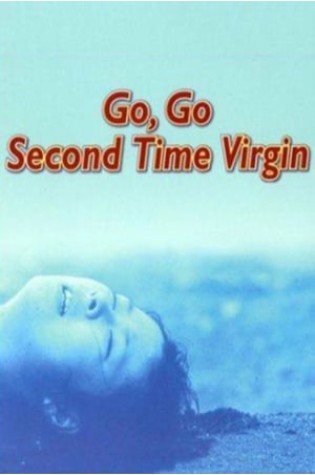
Lists It Appears On:
- Amino Apps
- IMDB
- Movements In Film
- MUBI
- Taste Of Cinema
After being raped in an unknown rooftop, nineteen year-old girl Poppo meets a mysterious boy, and both share their sexual traumas and fears, with fatal consequences.
6 .) Punishment Room (1956) directed by Kon Ichikawa
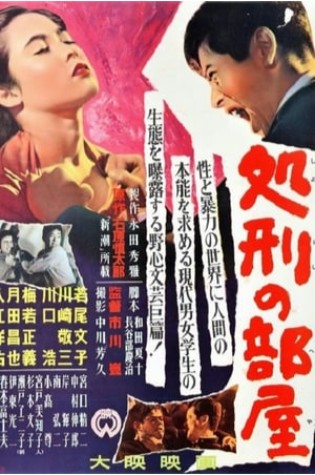
Lists It Appears On:
- Amino Apps
- IMDB
- Movements In Film
- MUBI
- Taste Of Cinema
Shimada is a student of U College. When the college’s baseball team wins the day, he and his friend Ito drug two girls they met at the game.
5 .) The Naked Island (1960) directed by Kaneto Shindô
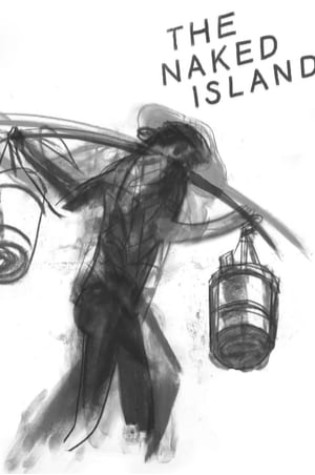
Lists It Appears On:
- Amino Apps
- IMDB
- Movements In Film
- MUBI
- Taste Of Cinema
Deals with the intolerably hard life of a family of four, the only inhabitants of a very small Japanese island in the Setonaikai archipelago. Several times a day they row over to the neighboring island to fetch water for their miserable fields.
4 .) Crazed Fruit (1956) directed by Kô Nakahira
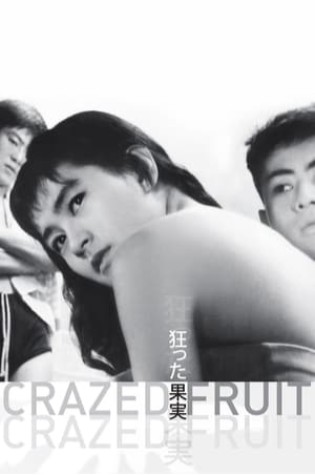
Lists It Appears On:
- Amino Apps
- Flick Feast
- IMDB
- Movements In Film
- MUBI
- Taste Of Cinema
Two brothers compete for the amorous favors of a young woman during a seaside summer of gambling, boating, and drinking, in this seminal Sun Tribe film from director Kô Nakahira. Adapted from the controversial novel by Shintarô Ishihara, and critically savaged for its lurid portrayal of the postwar sexual revolution among Japan’s young and privileged, Crazed Fruit is an anarchic outcry against tradition and the older generation.
3 .) Eros + Massacre (1969) directed by Yoshishige Yoshida
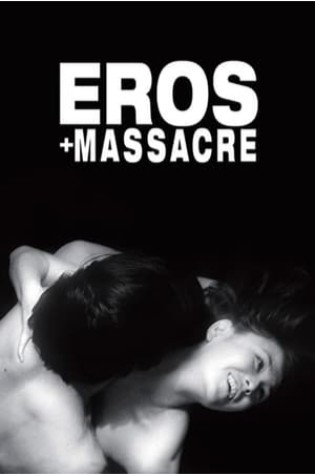
Lists It Appears On:
- Art Publikamag
- IMDB
- Movements In Film
- MUBI
- Taste Of Cinema
- White City Cinema
Two interwoven stories. The first is a biography of anarchist Sakae Osugi which follows his relationship with three women in the 1920s. The second centers around two 1960s students researching Osugi’s theories.
2 .) Funeral Parade of Roses (1969) directed by Toshio Matsumoto
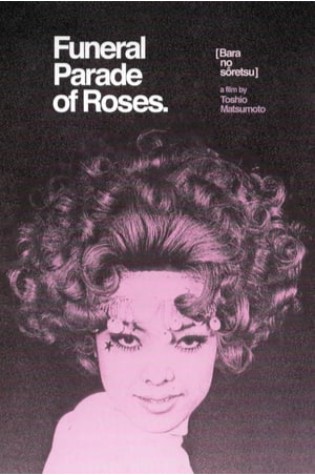
Lists It Appears On:
- Amino Apps
- BFI
- Flick Feast
- IMDB
- Movements In Film
- MUBI
- Taste Of Cinema
- White City Cinema
A feverish collision of avant-garde aesthetics and grind-house shocks, Funeral Parade of Roses takes us on an electrifying journey into the nether-regions of the late-’60s Tokyo underworld. In Toshio Matsumoto’s controversial debut feature, seemingly nothing is taboo: neither the incorporation of visual flourishes straight from the worlds of contemporary graphic-design, painting, comic-books, and animation; nor the unflinching depiction of nudity, sex, drug-use, and public-toilets. But of all the “transgressions” here on display, perhaps one in particular stands out the most: the film’s groundbreaking and unapologetic portrayal of Japanese gay subculture.
1 .) Woman in the Dunes (1964) directed by Hiroshi Teshigahara
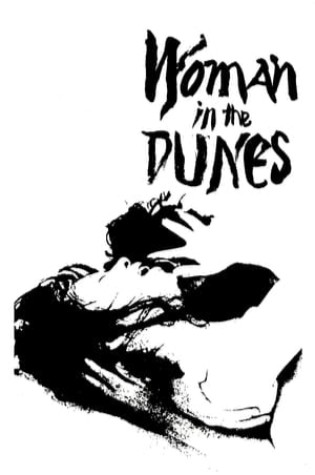
Lists It Appears On:
- Art Publikamag
- BFI
- Flick Feast
- IMDB
- Movements In Film
- MUBI
- Taste Of Cinema
- White City Cinema
An entomologist suffers extreme psychological and sexual torture after being taken captive by the residents of a poor seaside village.
The 75+ Additional Best Japanese New Wave Movies
| # | Movie | Director | Lists |
| 28 | A Man Vanishes (1967) |
Movements In Film
|
|
| – | – | – | MUBI |
| 29 | A Story Written With Water (1965) |
Movements In Film
|
|
| – | – | – | MUBI |
| 30 | A Sun-Tribe Myth from the Bakumatsu Era (1957) | Yûzô Kawashima | IMDB |
| – | – | – |
Movements In Film
|
| 31 | A Town of Love and Hope (1959) |
Movements In Film
|
|
| – | – | – | MUBI |
| 32 | Akitsu Springs (1962) | Yoshishige Yoshida | IMDB |
| – | – | – |
Movements In Film
|
| 33 | Assassination (1964) |
Movements In Film
|
|
| – | – | – | MUBI |
| 34 | Band of Ninja (1967) |
Movements In Film
|
|
| – | – | – | MUBI |
| 35 | Boy (1969) |
Movements In Film
|
|
| – | – | – | MUBI |
| 36 | Cruel Story of Youth | BFI | |
| – | – | – | MUBI |
| 37 | Diary of a Shinjuku Thief (1969) |
Movements In Film
|
|
| – | – | – | MUBI |
| 38 | Emperor Tomato Ketchup (1971) |
Movements In Film
|
|
| – | – | – | MUBI |
| 39 | Fighting Elegy (1966) |
Movements In Film
|
|
| – | – | – | MUBI |
| 40 | Gate of Flesh (1964) | Seijun Suzuki | IMDB |
| – | – | – |
Movements In Film
|
| 41 | Giants and Toys (1958) |
Movements In Film
|
|
| – | – | – | MUBI |
| 42 | God Speed You! Black Emperor (1976) | Mitsuo Yanagimachi |
Movements In Film
|
| – | – | – |
Taste Of Cinema
|
| 43 | Hiroshi Teshigahara | BFI | |
| – | – | – | IMDB 2 |
| 44 |
History of Postwar Japan as Told by a Bar Hostess (1970)
|
Movements In Film
|
|
| – | – | – | MUBI |
| 45 | In the Realm of the Senses (1976) | Nagisa Ôshima | IMDB |
| – | – | – |
Movements In Film
|
| 46 | Kisses (1957) |
Movements In Film
|
|
| – | – | – | MUBI |
| 47 | Nagisa Oshima | BFI | |
| – | – | – | IMDB 2 |
| 48 |
Nanami: The Inferno of First Love (1968)
|
MUBI | |
| – | – | – |
White City Cinema
|
| 49 | Onibaba (1964) |
Movements In Film
|
|
| – | – | – |
White City Cinema
|
| 50 | Pitfall (1962) |
Movements In Film
|
|
| – | – | – | MUBI |
| 51 | Shohei Imamura | BFI | |
| – | – | – | IMDB 2 |
| 52 | Sing a Song of Sex (1967) |
Movements In Film
|
|
| – | – | – | MUBI |
| 53 | Summer in Narita (1968) | Shinsuke Ogawa |
Movements In Film
|
| – | – | – |
Taste Of Cinema
|
| 54 | Summer Soldiers (1972) |
Movements In Film
|
|
| – | – | – | MUBI |
| 55 | Susumu Hani | BFI | |
| – | – | – | IMDB 2 |
| 56 | Tattooed Life (1964) |
Movements In Film
|
|
| – | – | – | MUBI |
| 57 | The Ceremony (1971) |
Movements In Film
|
|
| – | – | – | MUBI |
| 58 | The Sun’s Burial (1960) |
Movements In Film
|
|
| – | – | – | MUBI |
| 59 | The Warped Ones (1960) | Koreyoshi Kurahara | IMDB |
| – | – | – |
Movements In Film
|
| 60 | Three Resurrected Drunkards (1968) |
Movements In Film
|
|
| – | – | – | MUBI |
| 61 | Violence at Noon (1966) |
Movements In Film
|
|
| – | – | – | MUBI |
| 62 | A Colt Is My Passport (1967) | Takashi Nomura | IMDB |
| 63 | Abashiri Bangaichi (1965) | Teruo Ishii | IMDB |
| 64 | Aido: Slave of Love (1969) |
Movements In Film
|
|
| 65 | Bitter End of a Sweet Night (1961) | Yoshishige Yoshida | IMDB |
| 66 | Black Sun | Koreyoshi Kurahara | Flick Feast |
| 67 | Blind Beast (1969) | Yasuzô Masumura | IMDB |
| 68 | Boy (Oshima, 1969) |
White City Cinema
|
|
| 69 | Bride of the Andes (1966) |
Movements In Film
|
|
| 70 | Children Who Draw (1956) |
Movements In Film
|
|
| 71 | Coup d’État (1973) |
Movements In Film
|
|
| 72 | Dear Summer Sister (1972) |
Movements In Film
|
|
| 73 | Ecstasy of the Angels (1972) | Kôji Wakamatsu | IMDB |
| 74 | Furyo shonen (1961) | Susumu Hani | IMDB |
| 75 | Goddo supiido yuu! Burakku emparaa (1976) | Mitsuo Yanagimachi | IMDB |
| 76 | Himiko (1974) |
Movements In Film
|
|
| 77 | I Am Waiting (1957) | Koreyoshi Kurahara | IMDB |
| 78 | I Will Buy You | Masaki Kobayashi | Flick Feast |
| 79 | Inferno of First Love (1968) |
Movements In Film
|
|
| 80 | Japanese Summer: Double Suicide (1967) | Nagisa Ôshima | IMDB |
| 81 | Kaneto Shindo | BFI | |
| 82 |
Karayuki-san, the Making of a Prostitute (1973)
|
Movements In Film
|
|
| 83 | Kiku to Isamu (1959) | Tadashi Imai | IMDB |
| 84 | Kon Ichikawa | BFI | |
| 85 | Kurenai no nagareboshi (1967) | Toshio Masuda | IMDB |
| 86 | Kuroneko (1968) | Kaneto Shindô | IMDB |
| 87 |
Matsu the Untamed Comes Home (1974)
|
Movements In Film
|
|
| 88 | Naked Youth (1960) |
Movements In Film
|
|
| 89 | Nihon Kaiho sensen: Sanrizuka no natsu (1968) | Shinsuke Ogawa | IMDB |
| 90 | Ôkami to buta to ningen (1964) | Kinji Fukasaku | IMDB |
| 91 | Pastoral Hide and Seek (1974) |
Movements In Film
|
|
| 92 | Patriotism | Yukio Mishima | Flick Feast |
| 93 | Pleasures of the Flesh (1965) | Nagisa Ôshima | IMDB |
| 94 | Red Angel (Masumura, 1966) |
White City Cinema
|
|
| 95 | Ryakushô Renzoku Shasatsuma (1969) |
Movements In Film
|
|
| 96 | Seijun Suzuki | IMDB 2 | |
| 97 |
Shiro Amakusa, the Christian Rebel (1962)
|
Movements In Film
|
|
| 98 | Street Mobster (1972) | Kinji Fukasaku | IMDB |
| 99 | Street of Shame (1956) | Kenji Mizoguchi | IMDB |
| 100 | Suzaki Paradise Red Light (1956) |
Movements In Film
|
|
| 101 | Swastika (1964) | Yasuzô Masumura | IMDB |
| 102 | The Assignation (1959) |
Movements In Film
|
|
| 103 | The Blind Beast | Yasuzô Masamura | Flick Feast |
| 104 | The Catch (1961) |
Movements In Film
|
|
| 105 | The Embryo Hunts In Secret | Kôji Wakamatsu | Flick Feast |
| 106 | The Man Without a Map (1968) |
Movements In Film
|
|
| 107 | The Profound Desire of the Gods (1968) |
Movements In Film
|
|
| 108 | The Rebel | MUBI | |
| 109 | The Red Angel (1966) | Yasuzô Masumura | IMDB |
| 110 | The Ruined Map | MUBI | |
| 111 |
The Scandalous Adventures of Buraikan (1970)
|
Movements In Film
|
|
| 112 | The Song of Bwana Toshi (1965) |
Movements In Film
|
|
| 113 | The Sun Legend Of The End Of The Tokugawa Era | Yûzô Kawashima |
Taste Of Cinema
|
| 114 | This Transient Life (1970) | Akio Jissôji | IMDB |
| 115 | Violated Angels (1967) | Kôji Wakamatsu | IMDB |
| 116 | Warm Current (1957) |
Movements In Film
|
|
| 117 | With Beauty and Sadness | MUBI | |
| 118 | With Beauty and Sorrow (1965) |
Movements In Film
|
|
| 119 | Youth of the Beast (1963) | Seijun Suzuki | IMDB |
10 Best Japanese New Wave Film Sources/Lists
| Source | Article |
| Amino Apps | #MovementsOfFilm – Japanese New Wave |
| Art Publikamag | A Brief Overview of the Japanese New Wave Movement |
| BFI | Where to begin with the Japanese New Wave |
| Flick Feast | Top Ten Japanese New Wave Films |
| IMDB | Japanese New Wave |
| IMDB 2 | JAPANESE NEW WAVE (Nūberu bāgu) |
| Movements In Film | Japanese New Wave Films (1956 – 1976) — Movements In Film |
| MUBI | JAPANESE NEW WAVE – Movies List on MUBI |
| Taste Of Cinema | 20 Essential Films From The Japanese New Wave « Taste of Cinema |
| White City Cinema | A Japanese New Wave Primer |
